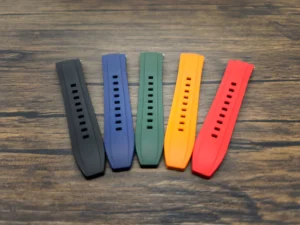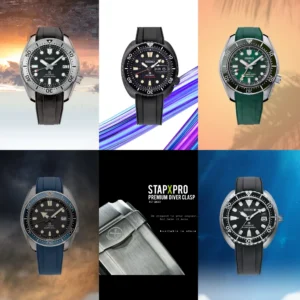Smart Vapes: How Technology is Shaping the Next Generation of Vaping
Over the past decade, the vaping industry has undergone rapid evolution, transitioning from simple e-cigarettes to highly sophisticated devices equipped with cutting-edge technology. As consumer demands grow for personalized, safer, and more convenient vaping experiences, manufacturers are responding by integrating smart technology into their products. Welcome to the era of smart vapes, where innovation meets satisfaction.
The Rise of Smart Vape Devices
Early vape devices were relatively simple: a battery-powered heating element vaporized e-liquid, offering a nicotine alternative to traditional smoking. But as technology advanced, so did consumer expectations. Today’s users want more than just nicotine delivery; they seek customization, safety, longevity, and control.
Smart vapes answer these needs by incorporating microprocessors, Bluetooth connectivity, sensors, and companion apps. These advancements turn a basic vape pen into a data-driven, interactive device that caters to the individual preferences of users.
Key Features of Smart Vapes
1. Bluetooth Connectivity and Mobile Apps
One of the hallmark features of smart vapes is their ability to sync with smartphones. Through dedicated apps, users can monitor their usage, adjust wattage and temperature, and even lock their devices remotely. This connectivity not only enhances convenience but also empowers users to better manage their nicotine intake and battery life.
For instance, some apps provide daily or weekly reports, allowing users to track their vaping habits, set goals, or reduce consumption gradually. This data-driven approach bridges the gap between enjoyment and responsibility.
2. Personalized Vaping Profiles
Gone are the days of one-size-fits-all vaping. Smart vapes allow users to create personalized profiles, saving preferred settings like temperature, power, and airflow for different e-liquid flavors. Switching between a rich dessert vape and a cool menthol flavor? The device remembers your ideal settings with a simple tap.
This customization not only improves flavor delivery but also extends coil and battery life, optimizing the vaping experience for both casual users and enthusiasts.
3. Advanced Safety Features
With technology comes enhanced safety. Smart vapes are equipped with features like overheat protection, short-circuit detection, puff limiters, and auto-shutoff. Some devices even send alerts to the user’s smartphone if irregularities are detected.
These safety mechanisms minimize risks associated with improper use or hardware malfunctions, providing peace of mind for users.
4. Firmware Updates
Just like smartphones, smart vapes can receive firmware updates via their companion apps. This capability ensures devices remain compatible with the latest features, bug fixes, and safety enhancements without the need to purchase a new device.
This ongoing software support helps extend the lifespan of devices and keeps users at the forefront of vaping innovations.
The Role of AI and Machine Learning
Artificial intelligence (AI) and machine learning are starting to make their mark on smart vapes. Some manufacturers are experimenting with AI-driven recommendations, where the device learns the user’s habits over time and suggests optimal settings for flavor, nicotine strength, or vapor production.
Imagine a vape that knows when you’re craving a stronger hit or when it’s time to dial it back. By analyzing usage patterns, AI-enabled vapes could offer real-time adjustments for a more tailored experience.
Sustainability Through Smart Technology
Another exciting frontier is sustainability. Smart vapes can track coil health, e-liquid consumption, and battery degradation, helping users make informed decisions that reduce waste. By alerting users when a coil needs replacing or when a battery is nearing the end of its lifecycle, smart devices encourage timely maintenance rather than premature disposal.
Additionally, some companies are exploring modular designs that allow users to replace individual components rather than discarding the entire device, aligning with growing environmental concerns.
Challenges and Considerations
Despite these technological leaps, smart vapes are not without challenges. Privacy and data security remain concerns, as connected devices collect personal usage data. Manufacturers must ensure robust encryption and transparent data policies to build consumer trust.
Moreover, the added complexity and higher price points of smart vapes may alienate novice users or those seeking simplicity. Striking a balance between functionality and ease of use will be critical to mainstream adoption.
Regulation is another area to watch. As vaping technology becomes more sophisticated, governments may impose stricter guidelines around safety standards, software updates, and data collection. The vaping industry must proactively engage with regulators to ensure innovation aligns with public health objectives.
The Future of Smart Vaping
Looking ahead, the possibilities for smart vapes are vast. We may soon see integration with wearable devices, allowing users to monitor nicotine levels alongside heart rate and stress indicators. Voice control, biometric authentication, and cloud-based usage tracking could further personalize the experience.
As technology continues to blur the lines between hardware and software, vaping devices are poised to become not just tools for nicotine delivery but intelligent companions in users’ wellness journeys.
In conclusion, smart vapes represent the next frontier in vaping—one where innovation drives personalization, safety, sustainability, and connectivity. While challenges remain, the fusion of technology and vaping is opening exciting new pathways for users and the industry alike. The future of vaping is not just smoke and mirrors; it’s data, design, and digital intelligence in every puff.










